The “Mausoleum of Bibi Maryam”

"The Mausoleum of Bibi Maryam" in Qalhat
The only surviving building of medieval Qalhat, popularly known as The Mausoleum of Bibi Maryam. Most of the photographs in this gallery were taken in the early 2000s, before the first conservation intervention in 2005.
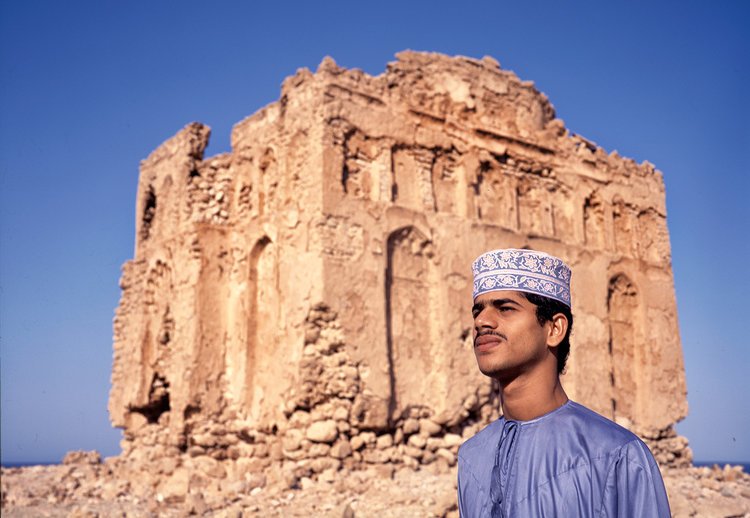
"The Mausoleum of Bibi Maryam" in Qalhat
"The Mausoleum of Bibi Maryam" in Qalhat.

"The Mausoleum of Bibi Maryam" in Qalhat
The south facade of “The Mausoleum of Bibi Maryam” in the medieval city of Qalhat, Ash-Sharqiyah North Governorate, photographed in the early 2000s before the first conservation intervention.

Qalhati Boys
Boys from the local village of Qalhat, with The Mausoleum of Bibi Maryam in the background. This image was made in 2004.
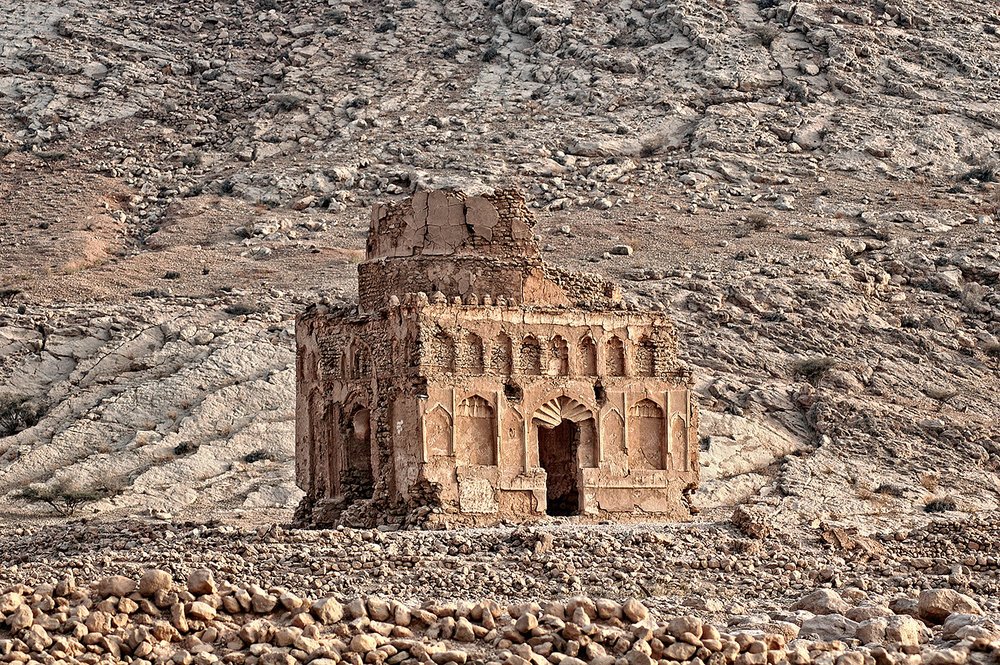
"The Mausoleum of Bibi Maryam" in Qalhat
The north facade of the "Mausoleum of Bibi Maryam" in Qalhat, Ash-Sharqiyah North Governorate. This image was taken in 2004.
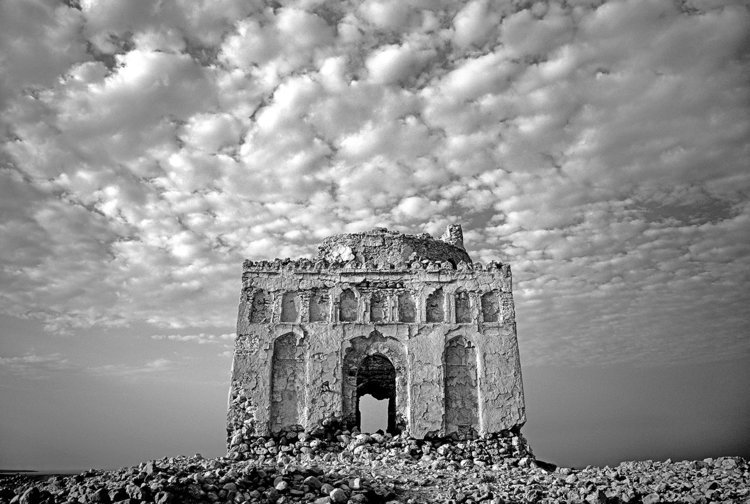
South Facade of "The Mausoleum of Bibi Maryam" in Qalhat
The south facade of The Mausoleum of Bibi Maryam in Qalhat in Oman’s Ash-Sharqiyah Governorate. Little is known about Bibi Maryam, other than that she was of Turkic origin and served as a slave in the household of the Hormuzi royal family. Dynastic struggles at the end of the 13th century saw her husband, Baha al-Din Ayaz, also a Turkic Mamluk in the royal household and former Wazir of Qalhat, become de facto ruler of Hormuz. Ayaz ruled wisely until c.1311 CE, after which date he may have retired to Qalhat. Bibi Maryam is mentioned as still politically active at Qalhat in 1319 CE. It is generally assumed that the building shown here was built by her as a mausoleum for her husband. There are no inscriptions surviving on the monument and no historical sources to support this notion.
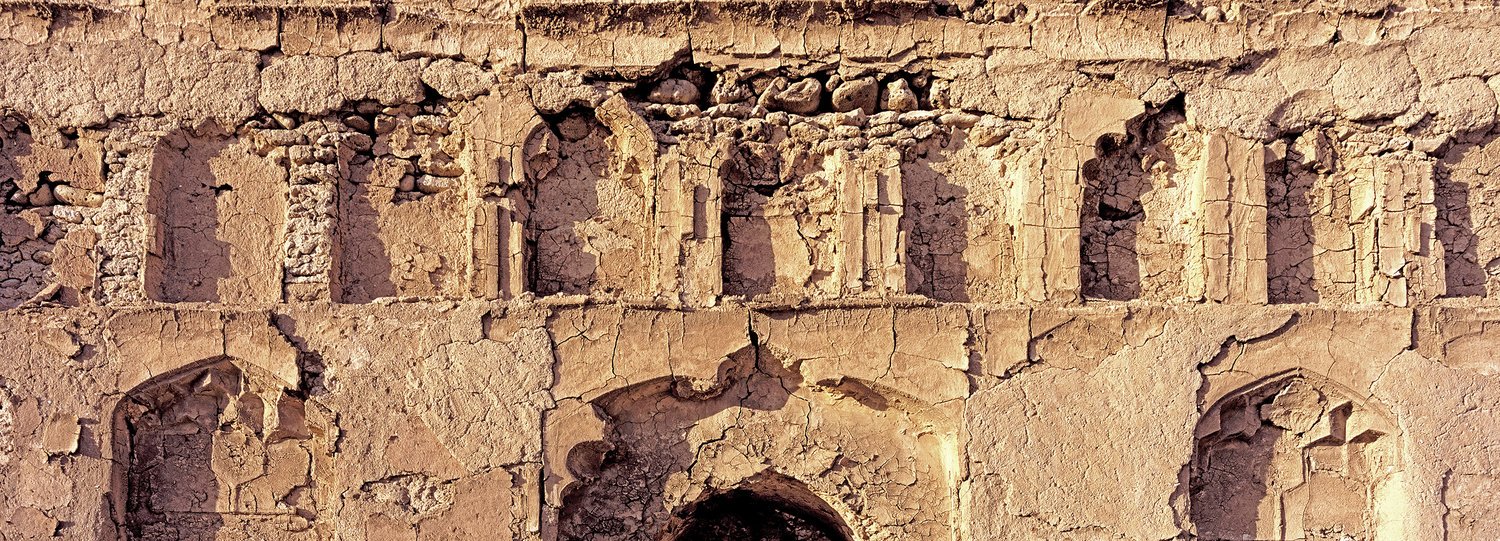
"The Mausoleum of Bibi Maryam" in Qalhat
The upper section of the south facade of The Mausoleum of Bibi Maryam in Qalhat. This image was made before the first modern conservation intervention in 2005. In the image, there is clear evidence of crude repairs to the stucco dating from the medieval period. These were removed during the second modern conservation intervention in 2021.
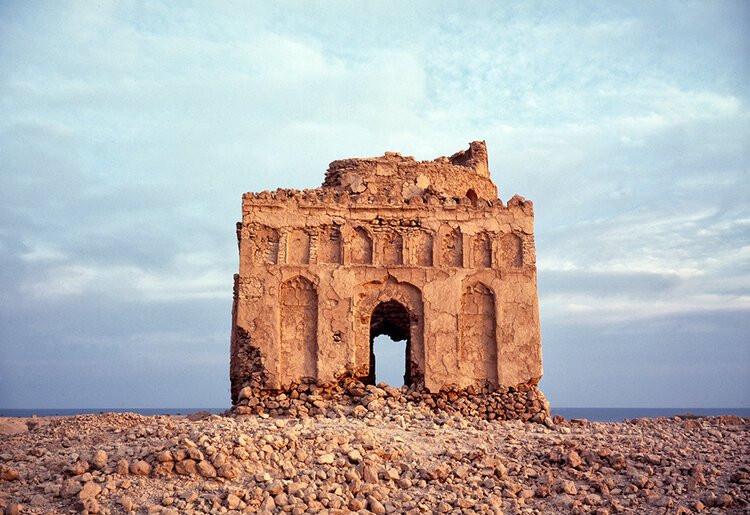
South Facade of "The Mausoleum of Bibi Maryam" in Qalhat
The south facade of The Mausoleum of Bibi Maryam in Qalhat, Ash-Sharqiyah North Governorate, taken in 2004 before the first modern conservation intervention.
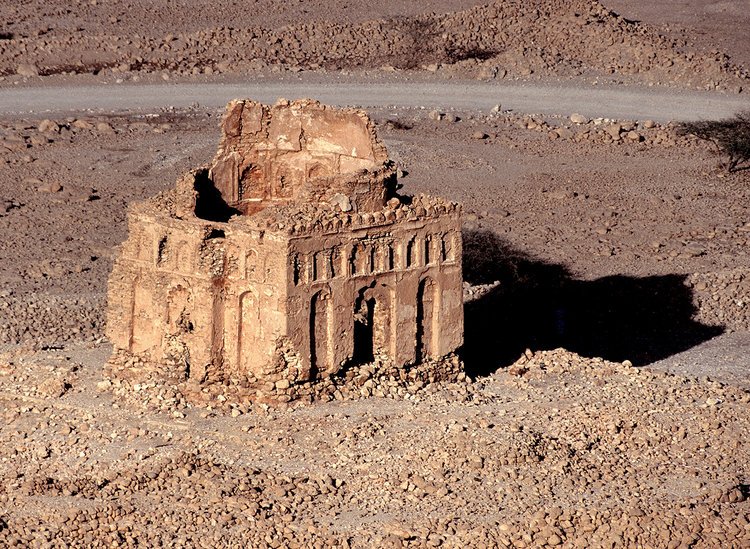
"The Mausoleum of Bibi Maryam" in Qalhat
The Mausoleum of Bibi Maryam in Qalhat, as seen from the foothills of the Eastern Hajar Mountains.

East Facade of "The Mausoleum of Bibi Maryam"
in Qalhat
The eastern facade of “The Mausoleum of Bibi Maryam” in Qalhat as it was in September 2004, before the first conservation intervention.

"The Mausoleum of Bibi Maryam" in Qalhat at Sunrise
The Mausoleum of Bibi Maryam is silhouetted against a sunrise over the Gulf of Oman. Assuming that the building was constructed around 1320 CE, it will to date have witnessed some 256,000 such sunrises.
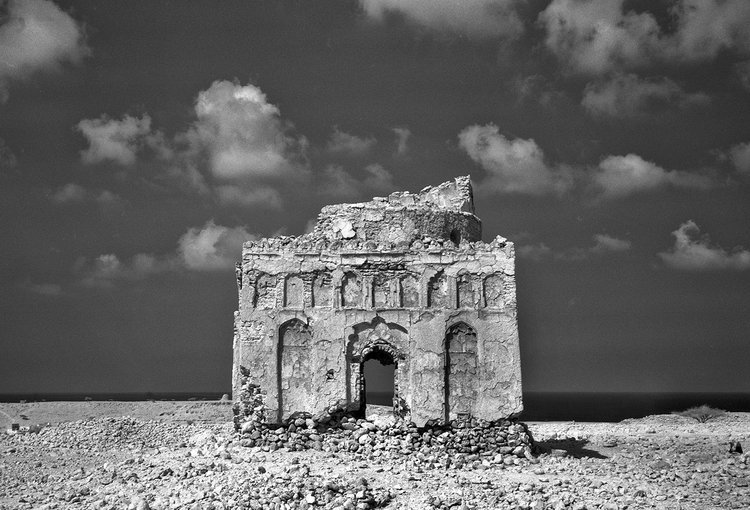
South Facade of "The Mausoleum of Bibi Maryam"
in Qalhat
The south facade of “The Mausoleum of Bibi Maryam” in Qalhat.

The Mausoleum of Bibi Maryam in Qalhat
A view through the main, east portal of The Mausoleum of Bibi Maryam in Qalhat, showing the entrance to the under-floor vault and the large mihrab in the western qibla wall. These two features have caused much debate regarding the original function of the building – mosque, shrine or mausoleum.

The Mausoleum of Bibi Maryam in Qalhat
A view eastwards through the main portal of The Mausoleum of Bibi Maryam over the ruins of Qalhat towards the Sea of Oman.
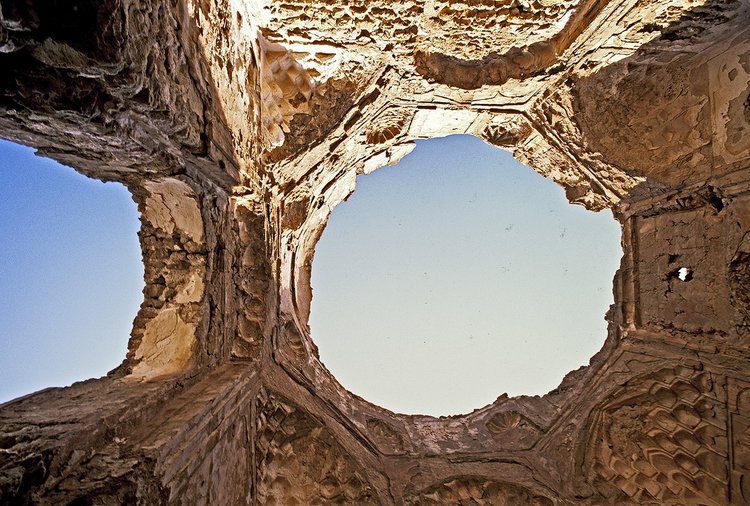
"The Mausoleum of Bibi Maryam" in Qalhat
Looking up from the vault through the chamber and drum of the Mausoleum of Bibi Maryam in the Ancient City of Qalhat, Ash-Sharqiyah North Governorate, Sultanate of Oman.

North Facade of "The Mausoleum of Bibi Maryam" in Qalhat
The north facade of The Mausoleum of Bibi Maryam in Qalhat in 2004. This facade shows clear signs of an unfinished restoration sometime in the distant past.

"The Mausoleum of Bibi Maryam" in Qalhat
Detail of the upper section of the north facade of The Mausoleum of Bibi Maryam in Qalhat, Sultanate of Oman, showing evidence of uncompleted repairs sometime in the distant past.
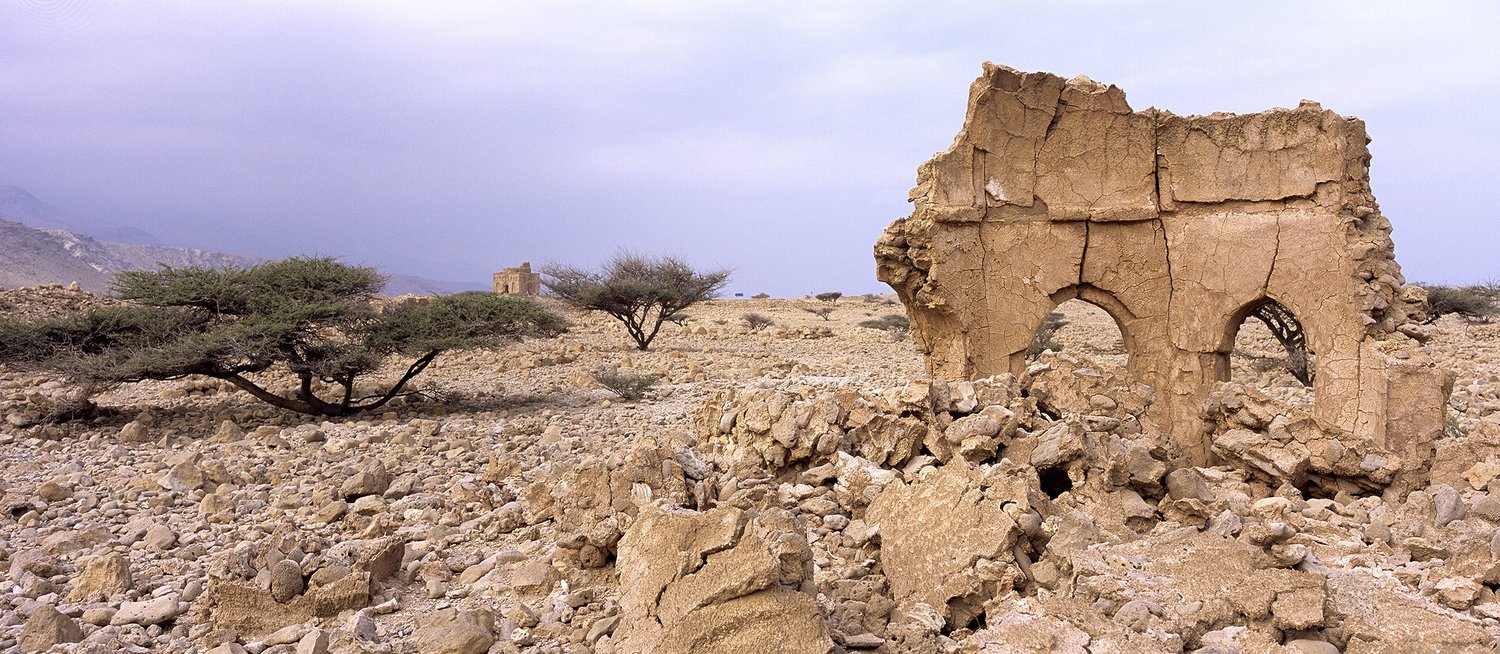
Ancient City of Qalhat
Ruins of a funerary structure in Qalhat, Ash-Sharqiyah North Governorate, with The Mausoleum of Bibi Maryam in the background.

East Facade of "The Mausoleum of Bibi Maryam" in Qalhat
The only surviving building of medieval Qalhat, popularly known as The Mausoleum of Bibi Maryam. This photograph was taken in the early 2000s, before the first conservation intervention in 2005.
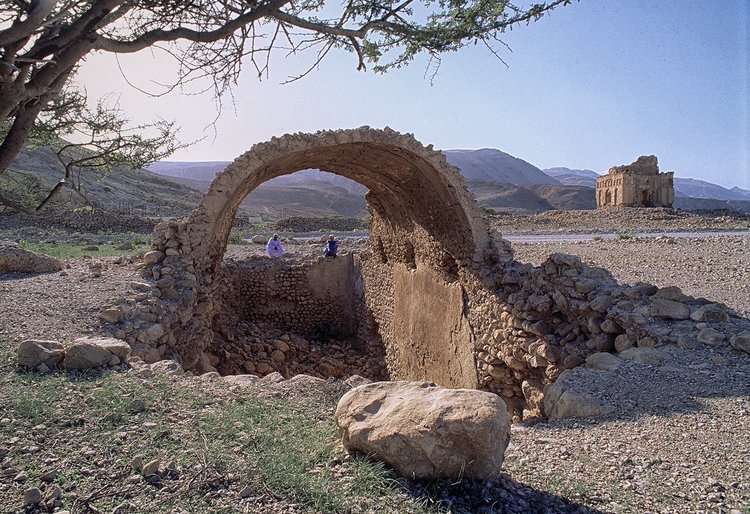
Ancient City of Qalhat
A large cistern with vaulted roof on the western side of Qalhat, with The Mausoleum of Bibi Maryam in the background.

"The Mausoleum of Bibi Maryam" in Qalhat
The Mausoleum of Bibi Maryan in Qalhat. This image was made in 2003.

"The Mausoleum of Bibi Maryam" in Qalhat
The east facade of The Mausoleum of Bibi Maryam in Qalhat, with the main entrance to the structure. This originally had a protruding arched portal, traces of which can be seen on either side of the doorway.
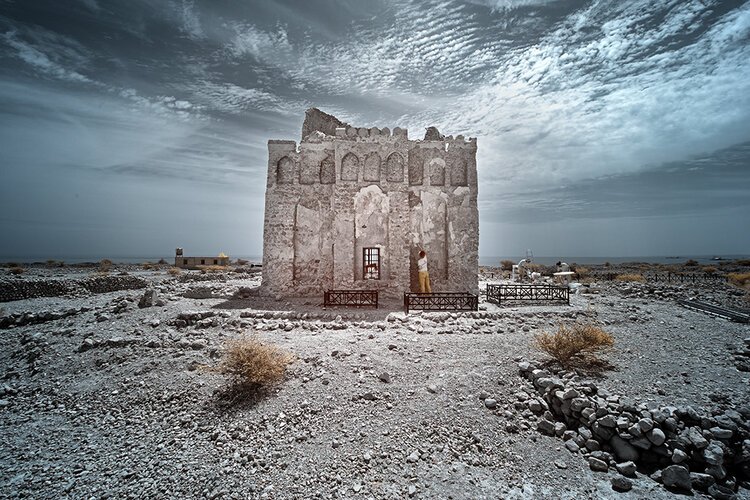
West Facade of "The Mausoleum of Bibi Maryam" in Qalhat
West facade of “The Mausoleum of Bibi Maryam” in Qalhat, Ash-Sharqiyah South Governorate, in May 2021.

"The Mausoleum of Bibi Maryam" in Qalhat
The south facade of The Mausoleum of Bibi Maryam at Qalhat in Oman’s Ash-Sharqiyah South Governorate. The name is a modern construction and seems to be derived from a brief notice by the great medieval Muslim traveller Ibn Battuta, who visited Qalhat c.1330 CE:
“The city of Qalhat is on the seacoast; it has fine bazaars and one of the most beautiful mosques. Its walls are tiled with qashani, which is like zalij, and it occupies a lofty situation from which it commands a view of the sea and the anchorage. It was built by the saintly woman Bibi Maryam, bibi meaning in their speech ‘noble lady’.” (Gibb, II, p. 396)

"The Mausomeul of Bibi Maryam" in
The north facade of “The Mausoleum of Bibi Maryam” following a conservation intervention in 2020-1.

"The Mausoleum of Bibi Maryam" in Qalhat
The east and north facades of The Mausoleum of Bibi Maryam in Qalhat. This image was made in 2004.
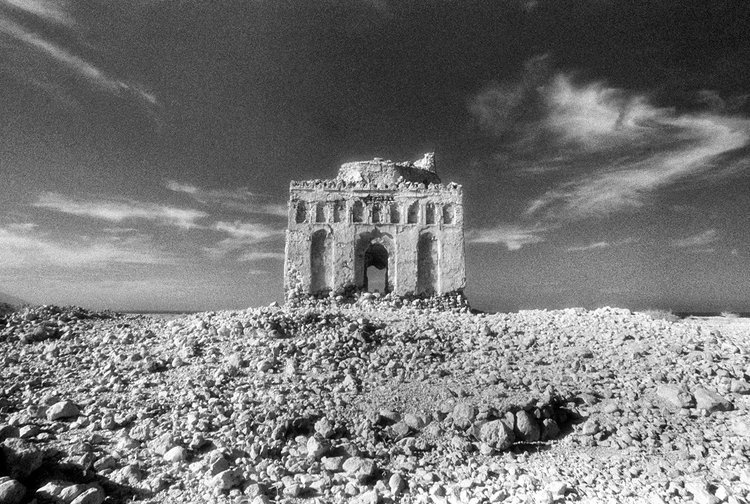
"The Mausoleum of Bibi Maryam", Qalhat
The south facade of the Mausoleum of Bibi Maryam in Qalhat, photographed in infrared in the early 2000s before the first conservation intervention.
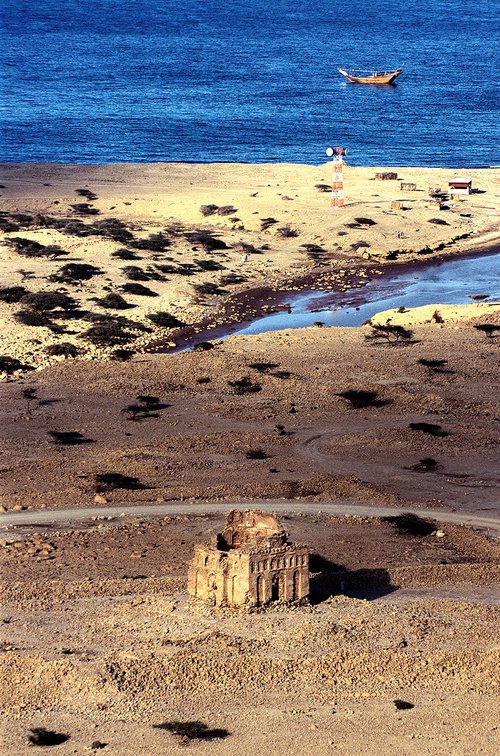
"The Mausoleum of Bibi Maryam" in Qalhat
Situated on a coastal plateau with strong natural defenses, Qalhat thrived as a transshipment port between the 13th and 16th centuries. The debouchment of the Wadi Hilim, partially visible in this image, may once have served Qalhat as a natural haven. The inlet is today largely clogged up with outwash debris from the wadi gorge.

The south facade of "The Mausoleum of Bibi Maryam" in Qalhat
The south facade of "The Mausoleum of Bibi Maryam in Qalhat as it was in 2005 before the first modern conservation intervention.

"The Mausoleum of Bibi Maryam" in Qalhat
The south facade of The Mausoleum of Bibi Maryam in Qalhat, Ash-Sharqiyah North Governorate, photographed in 2004.

"The Mausoleum of Bibi Maryam" in
The east facade of “The Mausoleum of Bibi Maryam” in Qalhat, Ash-Sharqiyah North Governorate, following a conservation intervention in 2020-1.

"The Mausoleum of Bibi Maryam" in Qalhat
The east facade of the Mausoleum of Bibi Maryam in Qalhat, Ash-Sharqiyah North Governorate, photographed in Spetember 2004 before the first conservation intervention.

"The Mausoleum of Bibi Maryam" in Qalhat
The south facade of The Mausoleum of Bibi Maryam in Qalhat, photographed in 2003.

"The Mausoleum of Bibi Maryam" from a nearby Tomb
tomb
The Mausoleum of Bibi Maryam photographed through a ventilation slit in a nearby tomb in the early 2000s.

"The Mausoleum of Bibi Maryam" in Qalhat
The south facade of The Mausoleum of Bibi Maryam in Qalhat, Ash-Sharqiyah Governorate. This image was taken in 2003, before the first modern conservation intervention.

"The Mausoleum of Bibi Maryam" in Qalhat
The south facade of The Mausoleum of Bibi Maryam in Qalhat. This image was made in the erly 2000s, before the first conservation intervention in 2005.

"The Mausoleum of Bibi Maryam" in Qalhat
South Facade of “The Mausoleum of bib Maryam” in Qalhat in May 2021, after a consevation intervention.
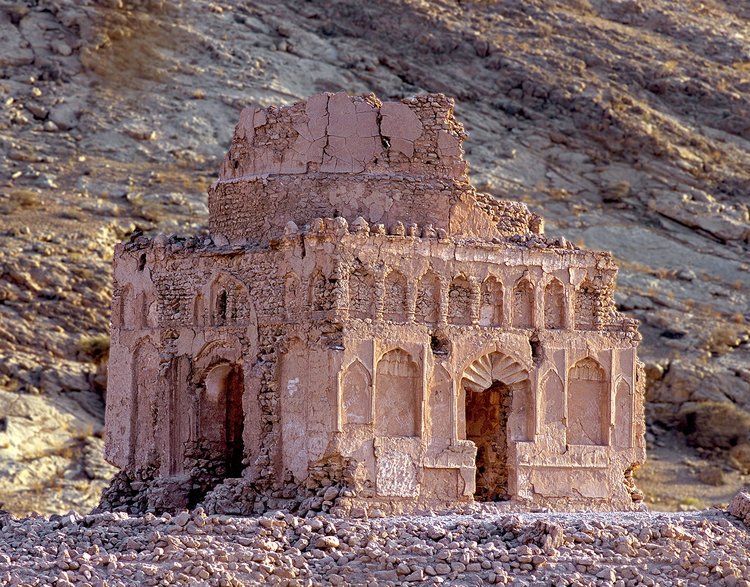
"The Mausoleum of Bibi Maryam" in Qalhat
The North and east facades of The Mausoleum of Bibi Maryam in Qalhat, photographed before the first modern conservation intervention in 2005.

"The Mausoleum of Bibi Maryam" in Qalhat
The south facade of “The Mausoleum of Bibi Maryam” in the medieval city of Qalhat, Ash-Sharqiyah North Governorate, photographed in the early 2000s before the first conservation intervention.
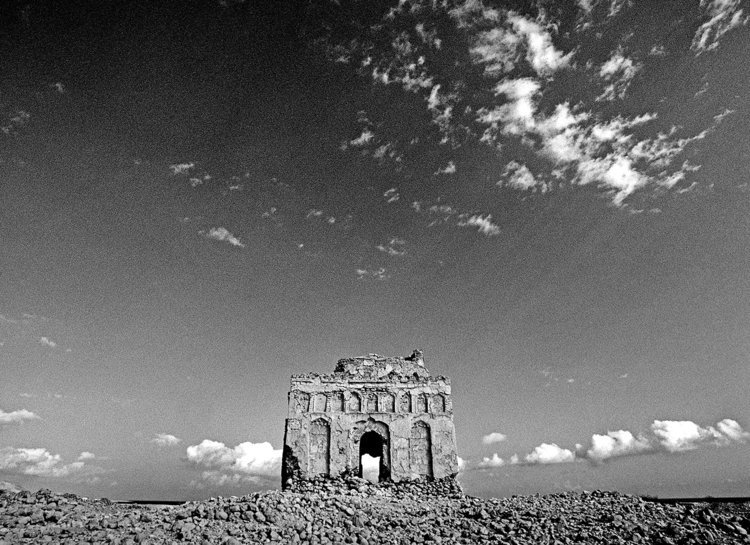
The Mausoleum of Bibi Maryam in Qalhat
The so-called Mausoleum of Bibi Maryam in Qalhat, Ash-Sharqiyah North Governorate. It was built at a time when much of the northern Oman littoral was under the control of the maritime power of Hormuz.

The Mausoleum of Bibi Maryam in Qalhat
The under-floor vault of The Mausoleum of Bibi Maryam in Qalhat before clearance of debris in 2005. Whether the vault contained a burial or a sacred relic is not known.
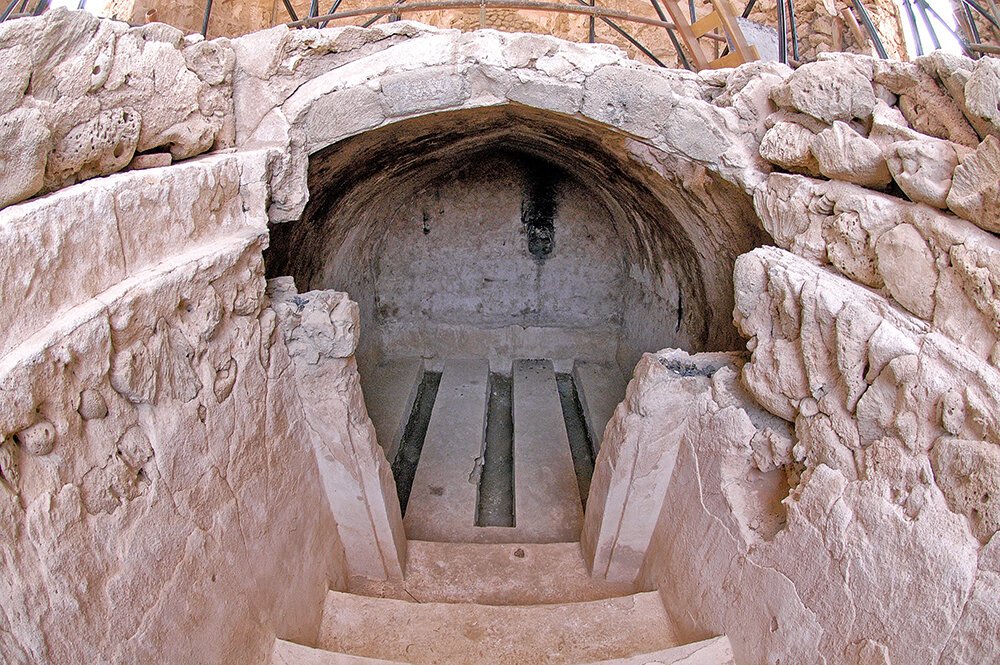
The Mausoleum of Bibi Maryam in Qalhat
The under-floor vault of The Mausoleum of Bibi Maryam in Qalhat after clearance of debris in 2005. Whether the vault contained a burial or a sacred relic is not known.

The Mausoleum of Bibi Maryam in Qalhat
Detail of the upper section of the north facade of The Mausoleum of Bibi Maryam in Qalhat, Sultanate of Oman, showing evidence of uncompleted repairs sometime in the distant past.

Qalhati Boys
Boys from the local village of Qalhat, with The Mausoleum of Bibi Maryam in the background. This image was made in 2004.

The Mausoleum of Bibi Maryam in Qalhat
The Mausoleum of Bibi Maryan in Qalhat. This image was made in 2003.
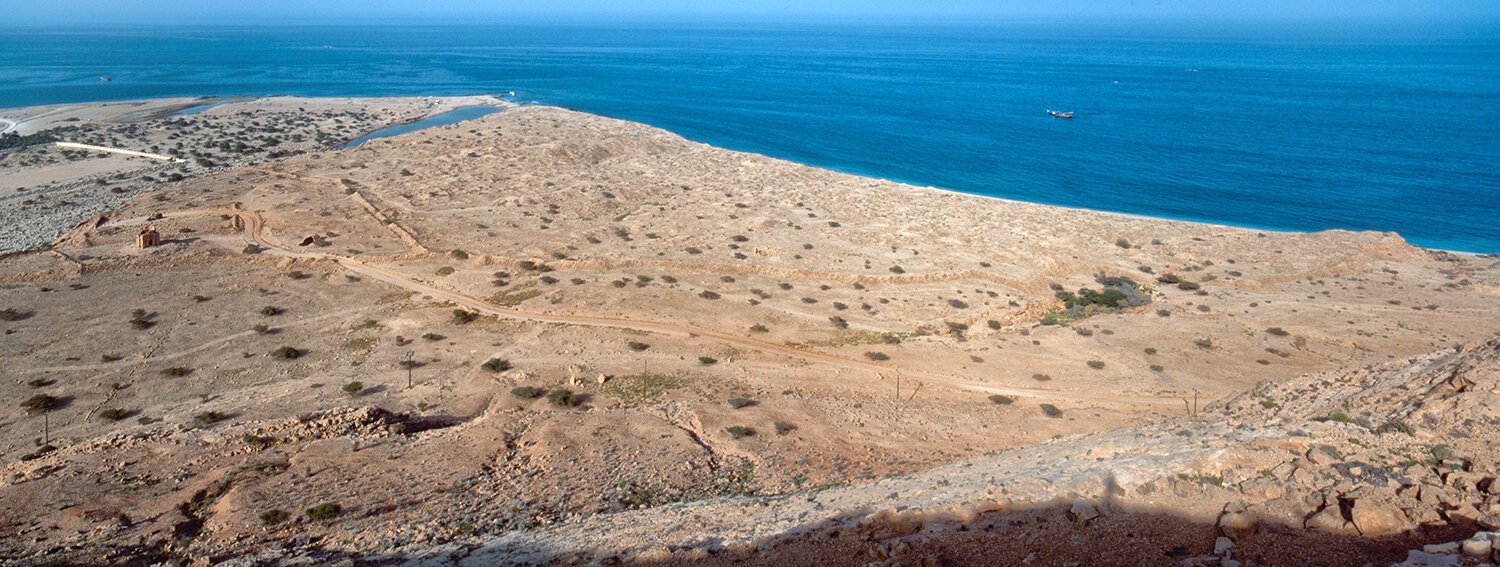
Qalhat
A view of the ruins of Qalhat from the foothills of the Eastern Hajar mountains. The Mausoleum of Bibi Maryam can be seen on the far left of the picture. This image was made in 2004.

South Facade of "The Mausoleum of Bibi Maryam" in Qalhat
The south facade of The Mausoleum of Bibi Maryam in Qalhat, Ash-Sharqiyah North Governorate, taken before the first modern conservation intervention in 2005.

South Facade of "The Mausoleum of Bibi Maryam" in Qalhat
The south facade of The Mausoleum of Bibi Maryam in Qalhat, Ash-Sharqiyah North Governorate, taken before the first modern conservation intervention in 2005.

South Facade of "The Mausoleum of Bibi Maryam" in Qalhat
The south facade of The Mausoleum of Bibi Maryam in Qalhat, Ash-Sharqiyah North Governorate, taken before the first modern conservation intervention in 2005.

East Facade of "The Mausoleum of Bibi Maryam" in Qalhat
The east facade of The Mausoleum of Bibi Maryam in Qalhat, Ash-Sharqiyah North Governorate, taken before the first modern conservation intervention in 2005.

Interior of "The Mausoleum of Bibi Maryam" in Qalhat
Interior squinches and arches of The Mausoleum of Bibi Maryam in Qalhat, Ash-Sharqiyah North Governorate, taken before the first modern conservation intervention in 2005.

Graffiti in the "The Mausoleum of Bibi Maryam" in Qalhat
Graffiti in Gujarati language in the interior of the Mausoleum of Bibi Maryam. The text contains the date 1725 in the Indian Vikram Samvat calendar, corresponding to 1803 CE. The graffiti seems to be an inventory list and mentions rice bags, oil jars, cotton, tobacco and ghee, suggesting that the building was used as a store room at that time.

Interior of "The Mausoleum of Bibi Maryam" in Qalhat
A digitally stitched image of the interiod of the chamber of The Mausoleum of Bibi Maryam in Qalhat, Ash-Sharqiyah North Governorate, as it was before the first modern conservation intervention in 2005.

North Facade of "The Mausoleum of Bibi Maryam" in Qalhat
The north facade of The Mausoleum of Bibi Maryam in Qalhat, Ash-Sharqiyah North Governorate, taken before the first modern conservation intervention in 2005.
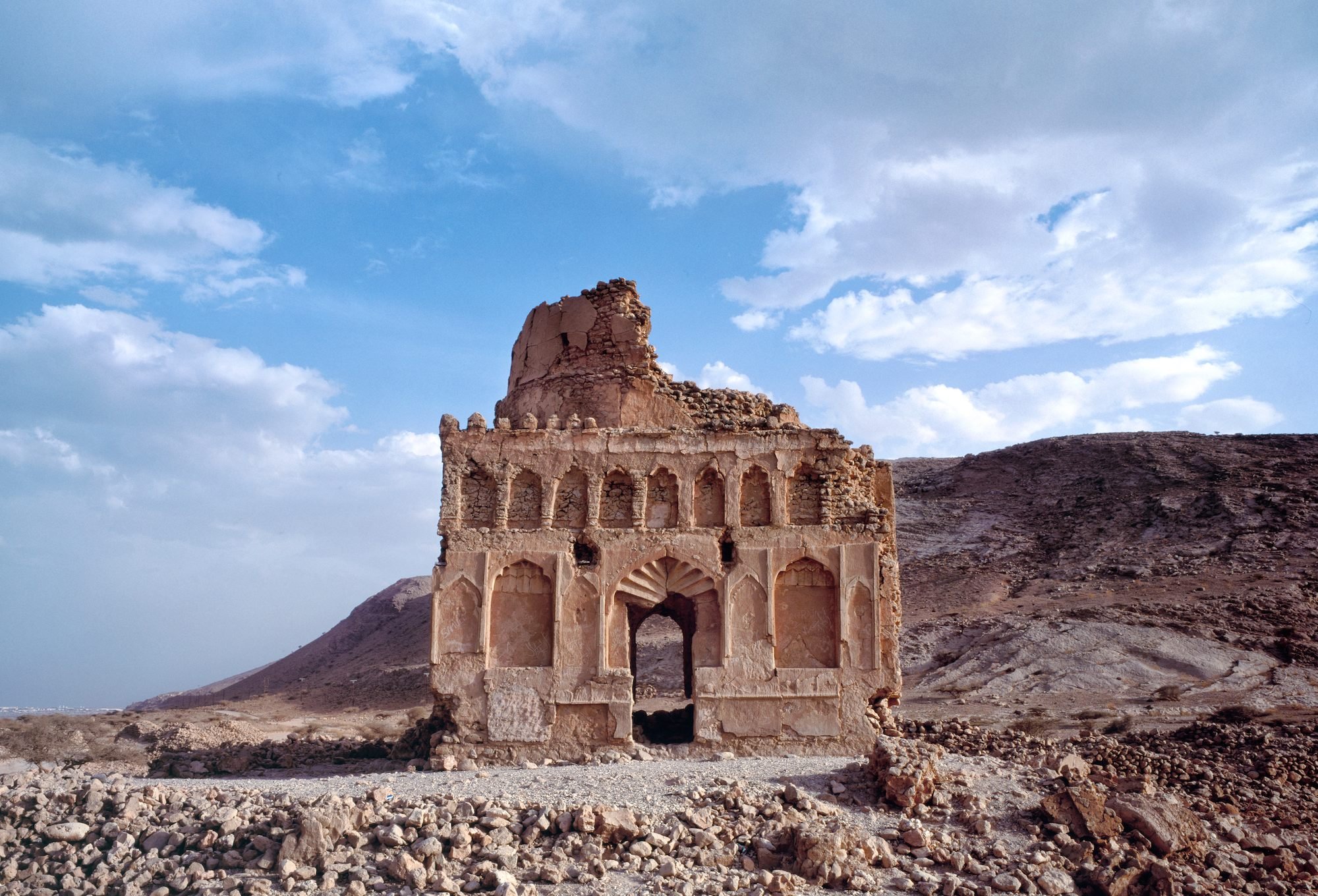
North Facade of "The Mausoleum of Bibi Maryam" in Qalhat
The north facade of The Mausoleum of Bibi Maryam in Qalhat, Ash-Sharqiyah North Governorate, taken before the first modern conservation intervention in 2005.

South Facade of "The Mausoleum of Bibi Maryam" in Qalhat
The south facade of The Mausoleum of Bibi Maryam in Qalhat, Ash-Sharqiyah North Governorate, taken before the first modern conservation intervention in 2005.

South Facade of "The Mausoleum of Bibi Maryam" in Qalhat
The south facade of The Mausoleum of Bibi Maryam in Qalhat, Ash-Sharqiyah North Governorate, taken before the first modern conservation intervention in 2005.

East Facade of "The Mausoleum of Bibi Maryam"
The east facades of The Mausoleum of Bibi Maryam in Qalhat, photographed just after sunrise in 2003.


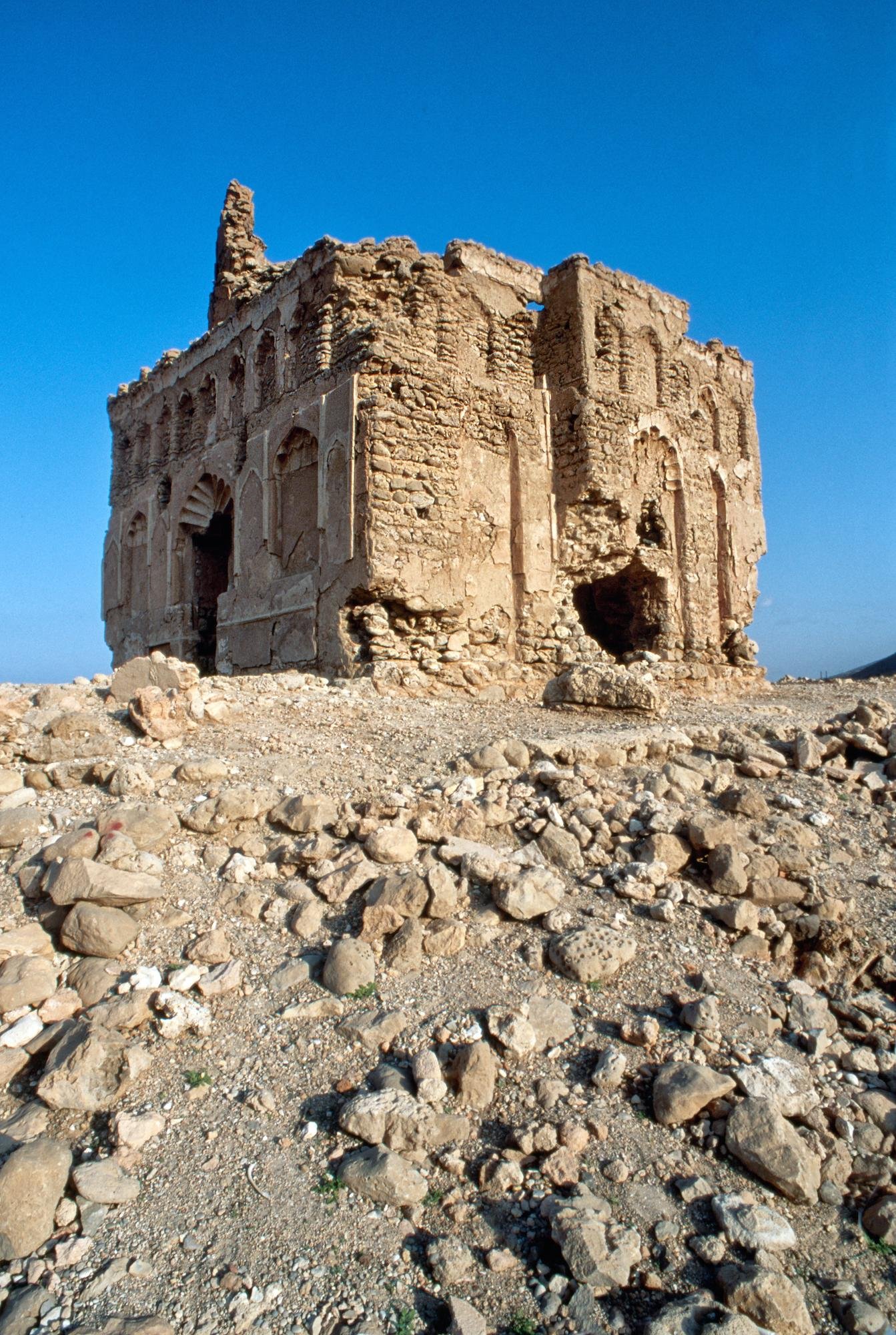
West Facade of "The Mausoleum of Bibi Maryam" in Qalhat
The west facade and mihrab salient of The Mausoleum of Bibi Maryam in Qalhat, Ash-Sharqiyah North Governorate, taken before the first modern conservation intervention in 2005.

Conservation Intervention on "The Mausoleum of Bibi Maryam" in Qalhat
The Mausoleum of Bibi Maryam in Qalhat, Ash-Sharqiyah North Governorate, taken during the first modern conservation intervention in 2005.
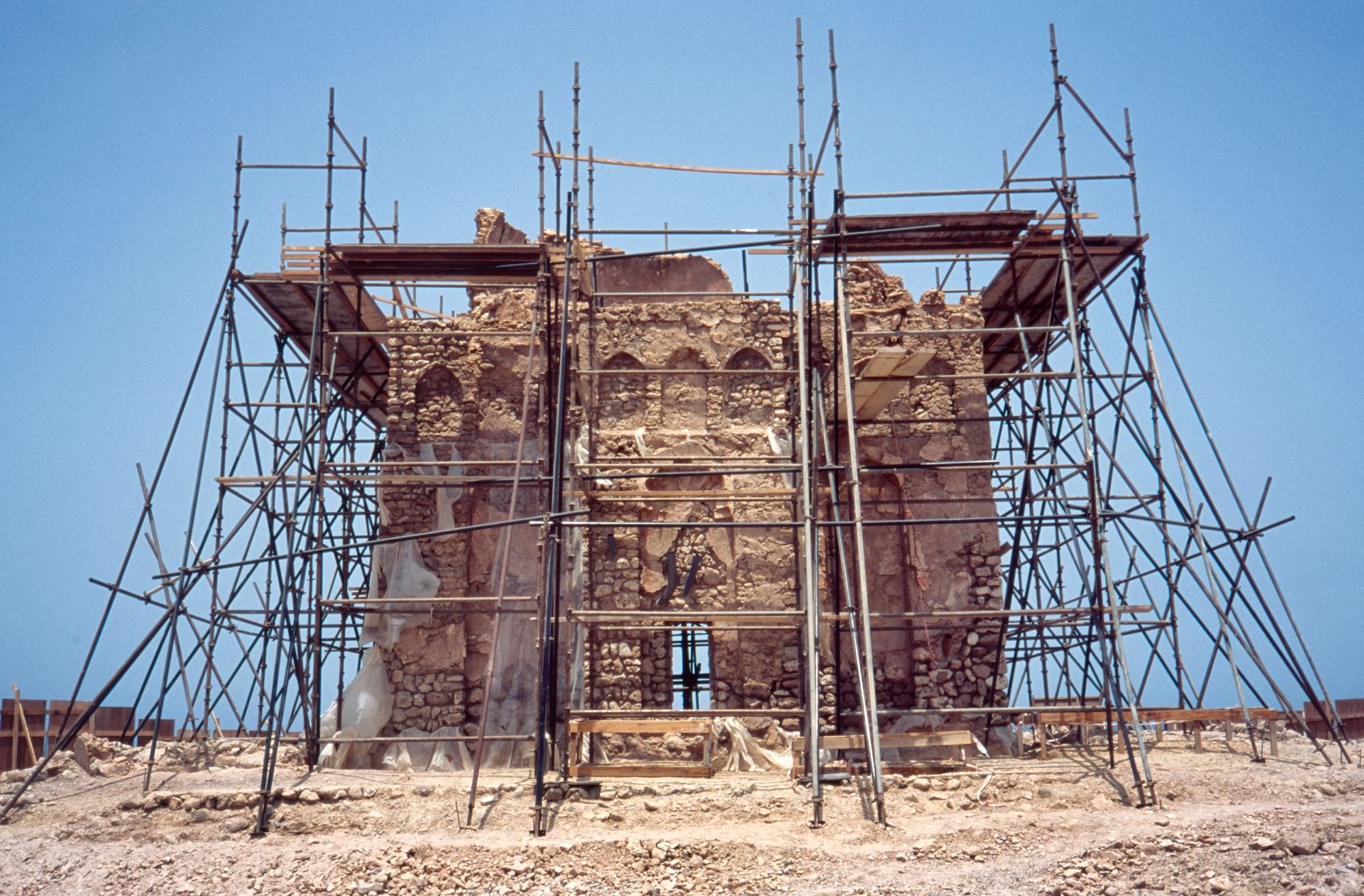
Conservation Intervention on "The Mausoleum of Bibi Maryam" in Qalhat
The Mausoleum of Bibi Maryam in Qalhat, Ash-Sharqiyah North Governorate, taken during the first modern conservation intervention in 2005.

Conservation Intervention on "The Mausoleum of Bibi Maryam" in Qalhat
The Mausoleum of Bibi Maryam in Qalhat, Ash-Sharqiyah North Governorate, taken during the first modern conservation intervention in 2005.

"The Mausoleum of Bibi Maryam" in Qalhat
The north and east facades of The Mausoleum of Bibi Maryam in Qalhat, photographed before the first modern conservation intervention in 2005.
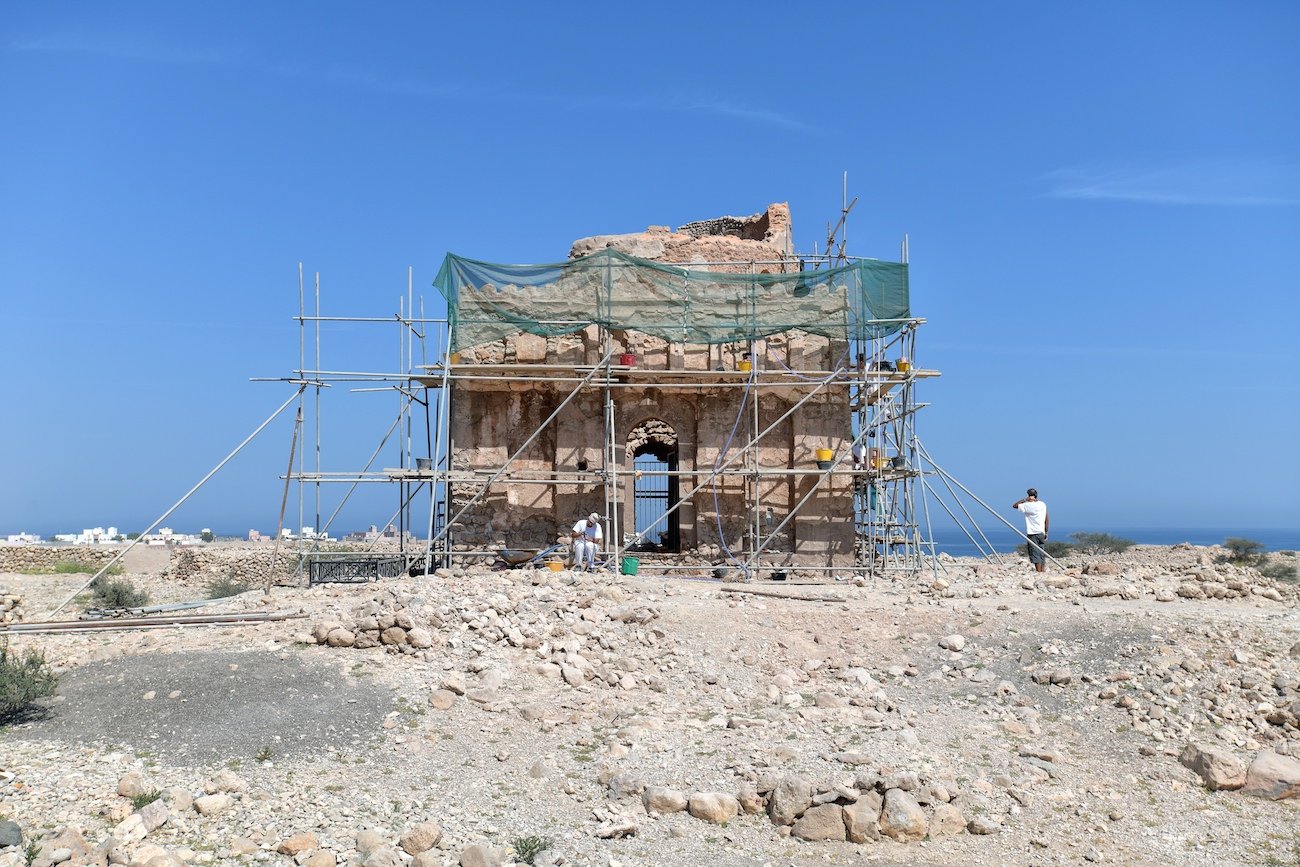
Second Conservation Intervention 2020/1
The south facade of the monument during the second modern conservation intervention, which began early in 2020 but, due to the Covid 19 Pandemic, could not be completed until May 2021.

Second Conservation Intervention 2020/1
The east facade of the monument during the second modern conservation intervention, which began early in 2020 but, due to the Covid 19 Pandemic, could not be completed until May 2021.
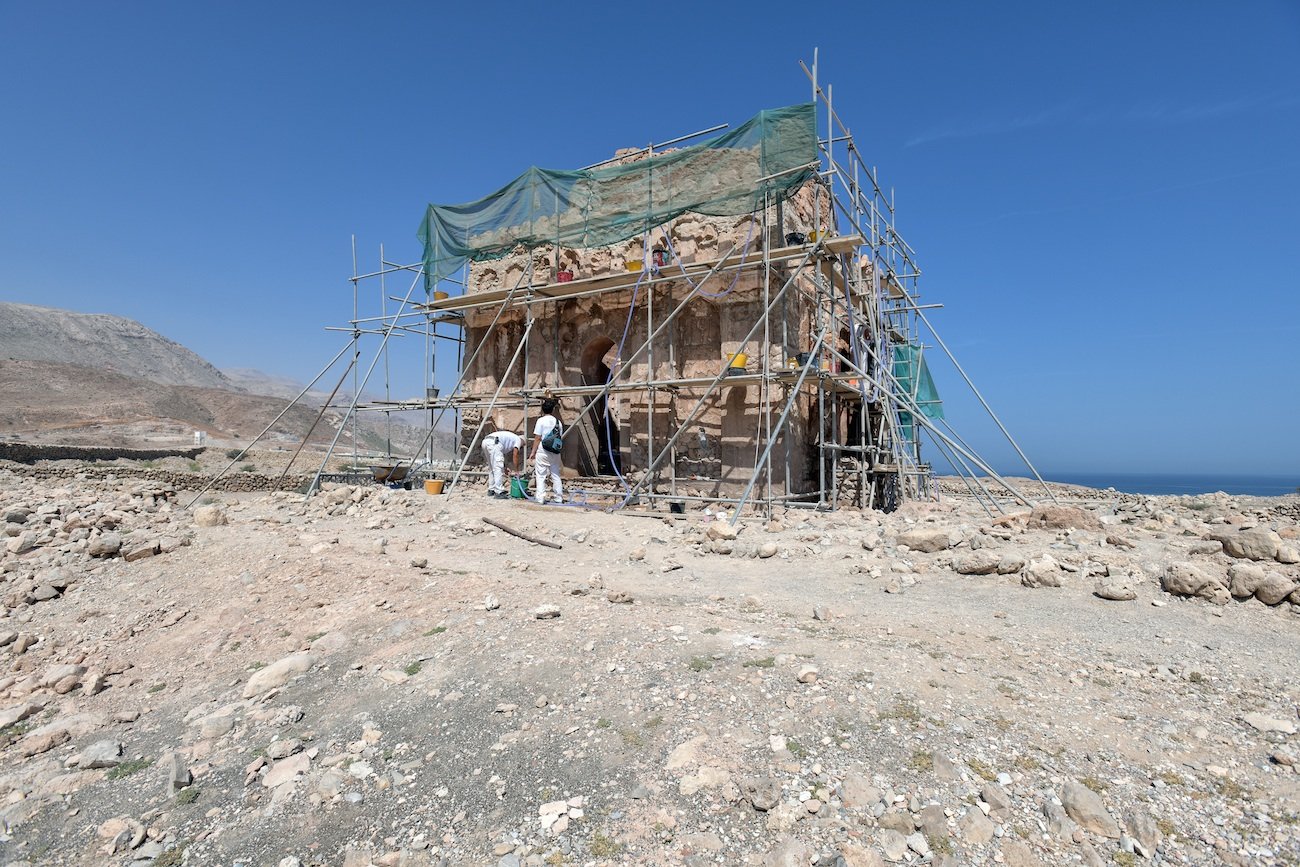
Second Conservation Intervention 2020/1
The east and north facades of the monument during the second modern conservation intervention, which began early in 2020 but, due to the Covid 19 Pandemic, could not be completed until May 2021.
